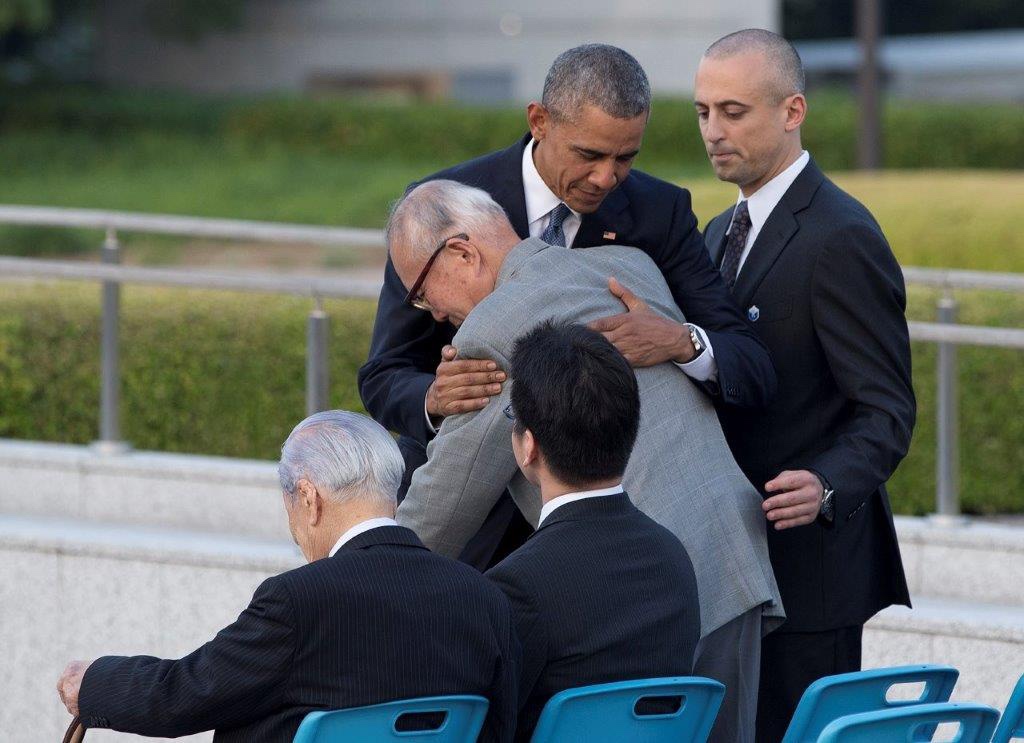President Obama’s speech and “We shall not repeat the evil” in Hiroshima
Published: 2022-08-07
August 6 marked the 77th anniversary of the atomic bombing in Hiroshima.
President Obama visited there in 2016. The last para of his speech was “That is a future we can choose, a future in which Hiroshima and Nagasaki are known not as the dawn of atomic warfare, but as the start of our own moral awakening.”

Three weeks before it, I gave the following memo to high ranking officials at the White House and the State Department.
I do not know if my memo may have had any influence on his speech or not, but hope sincerely that the message of the Hiroshima monument contributes towards abolishment of nuclear weapons.
Hiroshima Peace Park: Memorial Cenotaph – details of how decisions were made and its significance
Yukihisa Fujita
Member of the House of Councilors, The Diet of Japan May 2016
“LET ALL THE SOULS HERE REST IN PEACE FOR WE SHALL NOT REPEAT THE EVIL” In 1950 72 Japanese political and business leaders participated in the World Conference of MRA (Moral Re-Armament) in Switzerland. Japan was then under Allied occupation, and it was the first large delegation allowed to leave the country following the end of the war with the permission of the Supreme Commander General MacArthur. The delegation included Hon. Yasuhiro Nakasone and seven members of parliament, Shinzo Hamai, mayor of Hiroshima City, the governor of Nagasaki Prefecture, and the mayor of the City of Nagasaki. The Conference became the post war bridge for reconciliation between Germany and France in which within a few years approximately 4,000 Germans and 2,000 French people joined. Among them were Chancellor Adenauer of Germany and Foreign Minister Robert Schuman of France.
• No one was blamed for any wrongdoing. Here, there were only the words, “Sorry”, “I was wrong” and “Thank you.”
• The principle, “if one changes one’s heart, there will be peace in the world” was lived out at Mountain House (MRA conference center) in Switzerland.
(From Shinzo Hamai ‘s book “A-bomb Mayor”)
The party travelled to America from Europe, and in the US Congress the Japanese members of parliament apologized for the terrible disaster brought by the war.
• “Mayor Hamai’s inspiration for the engraving on the Memorial Monument came from his deeply moving experience when reading the epitaphs during his visit to the Tomb of the Unknowns in Arlington National Cemetery across the Potomac River from Washington D.C. “ (From Yoshimitsu Kozakai’s book “Behind the Memorial Monument Cenotaph”)
• “I wished to inscribe what would be the common prayer and pledge of all who would stand before the monument.
As Emily Grace Reaves aptly said, “Their suffering will have meaning only when those of us who live learn how to prevent the tragedy of future wars.“ If the monument does not inspire us to work for peace, it will be no more than stone of remembrance and an epitaph simply to mourn the victims.
“If all those who bow deeply before the monument would as members of humankind bear part of the responsibility for our mistakes and offer heartfelt apologies to the victims, I believed we would have the remorse and humility and tolerance that are essential for world peace. It is not only Japanese who will stand before the monument. Whatever country people come from, I believed that all must share those thoughts.
(From Shinzo Hamai ‘s book “A-bomb Mayor”)
There were lots of argument on whether the wording was right or not, as some Japanese ask why we Japanese have to apologize.
• Takata : “…comparing the strike on the American navy at Pearl Harbor given Japan’s severe situation at the beginning of the war to dropping the world’s first atom bomb on Hiroshima without warning, I would say that United States of America has committed a much graver sin against humanity. What do you think?”
• Hamai: “…You were not in Hiroshima at the time the A-bomb was dropped. I was there and was bombed, and I saw the terrible scene with my own eyes. That is the big difference. The first thing that came to my mind at that moment was that this might be the end of the world. It was not to inquire who was responsible, but to be pierced by the thought that this horrible thing must never happen again to our world of human beings.” (From Masami Takata’s books, “Peace Rather than an Inquisition on the Bombing” and “Memoirs of Shinzo Hamai.”)
• “I too am for World Federalism, and I believe we should not change the wording, “Let all the souls here rest in peace, for we shall not repeat the evil”… At an official press interview that took place on August 3, 1970, I announced as mayor that the inscription on the cenotaph would not be changed, at which it was officially decided.”
(Setsuo Yamada, Mayor of Hiroshima City who was in the Japanese delegation in 1950. Chugoku Shimbun newspaper article March 18, 1970.)
•
• “Wars should be looked at squarely from both sides, those receiving and those inflicting causalities. With deep feelings engraved in our hearts for all victims of wars, we wish to apologize to the many people on whom we caused unbearable suffering through Japan’s colonial rule and wars in the past.”
(Kei Hiraoka, Mayor of the City of Hiroshima, from his 1995 Declaration of Peace)
MEMORIAL MONUMENT FOR HIROSHIMA, CITY OF PEACE
(MEMORIAL CENOTAPH FOR THE A-BOMB VICTIMS)
Erected 6 August 1952
LET ALL THE SOULS HERE REST IN PEACE
FOR WE SHALL NOT REPEAT THE EVIL
This monument embodies the hope that Hiroshima, devastated on 6 August 1945 by the world’s first atomic bombing, will stand forever as a city of peace.